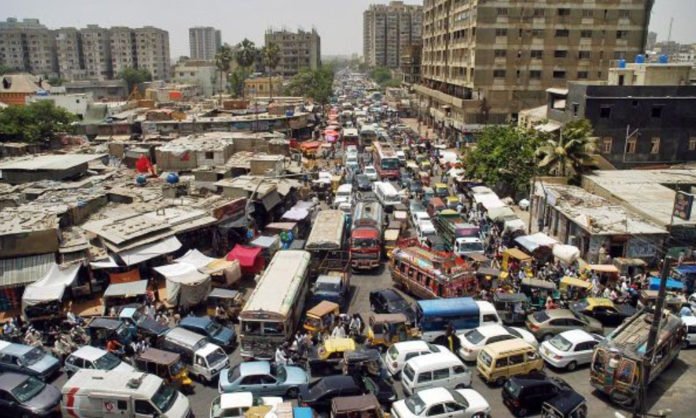As a long-established, significant metropolis in the area, Karachi, Pakistan, has outgrown its transit system due to the city’s recent fast growth. Now that the metro region is home to an estimated 23 million people, the city’s over reliance on vehicles is catching up with it and producing uncomfortable traffic jams and air pollution.

Is population the root cause?
The city’s transportation and land use plans have not kept up with the city’s population growth from 450,000 in 1947 to now. Long commutes became the norm as a result of downtown financial and commercial centers and the city’s constant growth. The tremendous influx of population, initially from rural Pakistan and subsequently from India, outpaced efforts to establish new manufacturing facilities outside the city for new immigrants. As a result, residents’ commutes to the city centre for employment continued to dominate transport usage patterns.
Karachi is trying to make significant modifications to its transit system in order to enhance life for locals as a result of a historic transportation crisis that is producing congestion and pollution. The city has invested in how a state-of-the-art bus rapid transit system may help to enhance mobility and provide an alternative to ever-increasing congestion in collaboration with ITDP and the Asian Development Bank. An example of this is the green line metro which has been infamously seen bursting with people inside of it due to its long connectivity and cheap fares.

Some Initiatives
A positive move in this direction is the Karachi Metropolitan Corporation’s proposal to begin a dedicated bus lane for the Bus Rapid Transit System (BRTS). The 22.4-kilometer track runs from Dawood Chowrangi in Landhi to Numaish Chowrangi in Saddar and cuts travel time in half. According to the BRTS, around 13,000 passengers will be able to utilize it every hour and approximately 200 big buses would operate at intervals of a few minutes on either side of the road’s green belt. A public-private partnership would be used to carry out the project, which will cost two billion rupees.
A “direct service” concept was also recommended to benefit travellers the most. Instead of needing transfer stations at either end to use the dedicated lanes, the system may eliminate transfers and expand its reach outside of the corridor itself by enabling buses to enter and exit the BRT route at any location. Additionally, it provides additional chances for collaboration between the city and private bus companies to enhance city transit. Planners might lessen drivers’ worries about losing customers and income by involving bus operators in plans for Karachi’s future transport system.
For now, the spike in petrol prices has already made public transport more attractive however they do not serve the purpose of providing comfort and convenience to the passengers. While public transportation is praised and is deemed the solution to all traffic clutches in the city, it is important to supervise bus and coaster drivers and have a systematic check and balance system often times they are the ones causing traffic and inconvenience for others by switching lanes, coming on the wrong side of the road or even racing with each other which basically defeats the purpose of this public transportation system.
Stay tuned to Brandsynario for the latest news and updates.












































